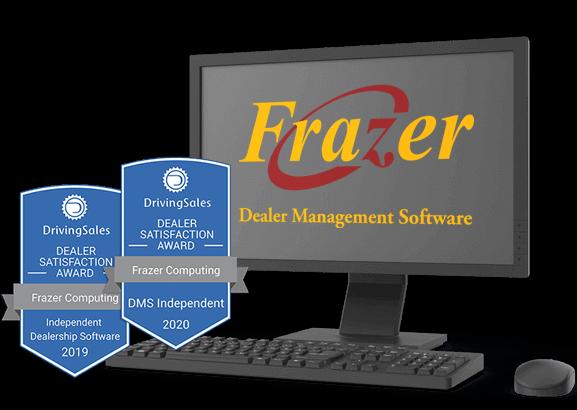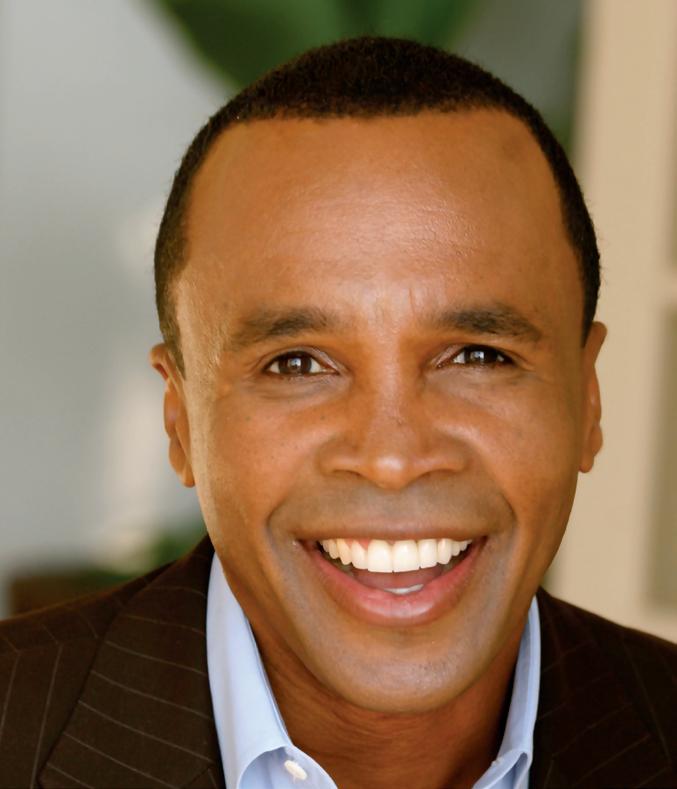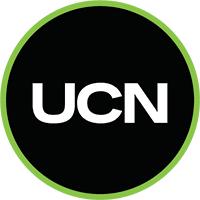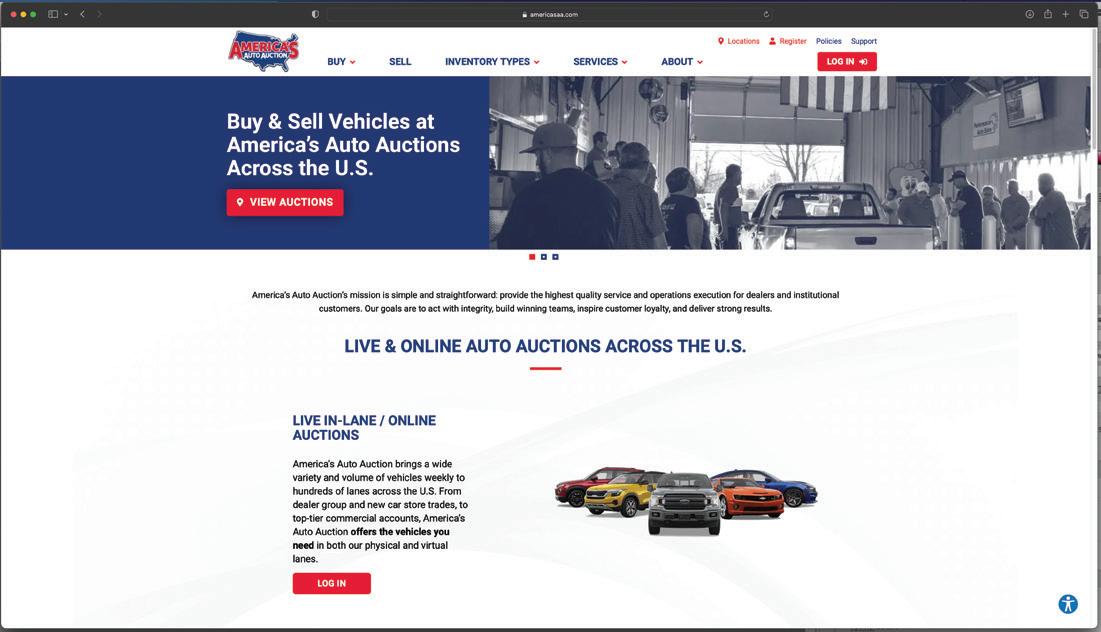UCN Used Car News





Jeff Martin, the new chief executive officer of the National Independent Automobile Dealers Association, wants the organization to better serve the needs of its members.
It’s something he’s learned to do over a long career serving membership organizations, including 16 years as executive director of the Texas Independent Automobile Dealers Association (TIADA).



“I grew up in Texas and lived here all my life,” he said. That’s one less adjustment for him since NIADA is based in Irving, Texas.
Martin attended Tarleton State University in Stephenville, Texas, studying speech communication.
“Almost immediately out of college, I got a job with the Association of Texas Professional Educators (ATPA) as a field representative,” he said.
His job was to travel across the state to tout the benefits of membership in the group.
“That was my first foot in the door of the association world,” Martin said.
He eventually became director of membership and also did consulting for other associations, one of those included the Texas IADA. In 2006, after a couple of meetings, its then-executive director told Martin he was planning to retire and pitched Martin as his replacement. The TIADA board made an offer and Martin was hired.

When he took over, Martin used the ATPA’s blueprint of building local chapters to support the larger organization. The challenge was that rounding up school teachers was easier since he could schedule a meeting at a local school and all the teachers in that district knew the school and would come.
To meet or recruit new dealermembers for TIADA, Martin had to essentially go to the auctions. Eventually, at its peak there were about nine chapters, though that model has changed since the growth of online media.

“There was more of a need to get together and share information (in person) back then,” he said. “Now


you can share information in the click of one button with an email.” Martin said he was blessed with strong leaders at TIADA.
“One of the things that was unique in Texas was the quality of the dealers who actively got involved in the association,” Martin said. “It didn’t take long for us to attract and
Continued on page 6





































The digital wholesale business was already growing before COVID-19, but the pandemic pressed the industry further into the digital world by necessity.
Auctions have responded with a variety of tools and systems to make buying a vehicle easier than ever.
The pandemic and the tight supply of inventory have pushed more dealers online, looking for inventory.
Several auction general managers have said that some dealers who used to come to the physical sale now do everything online.
Serving the digital market, like the physical lanes, is a matter of serving the dealer, said Kelly McAllister, vice president of digital strategy and sales for America’s Auto Auction.
“We’ve got to let the dealers tell us what they want us to do,” McAllister said. “I think a lot of auctions across the country and business are telling customers what they want them to do.”
One example is what America’s Auto Auction didn’t do during COVID.
“We didn’t shut down,” he said. “We kept running our day to day business. The dealers loved it and they came back. They appreciated it.”
McAllister said while digital sales were still important, its customers wanted to come into the physical lanes.
However, the pandemic made Manheim lean into its digital strategy.
Manheim pushed into the digital realm as hard as anyone, even before COVID-19 changed everything.
“Pre-pandemic, we had just crossed the threshold where the majority of our buyers were digital buyers, around 52%,” Zach Hallowell, SVP of Manheim Digital, said.
The pandemic forced Manheim to go all digital and now it’s going to what Hallowell described as a “new normal.”
Today, the number of digital transactions sits a little above 70%.
“Even as we started providing full physical auctions (post-pandemic) that number has been pretty steady,” Hallowell said. “We have a very strong, robust digital audience. But we recognize we have a segment of dealers that want to buy physically.”
A recent study from Manheim on the comfort level with buying digitally pre-pandemic showed 20%
were very comfortable, 40% were willing to try and 20% were uncomfortable, Hallowell said.
Today, the percentage that are very comfortable jumped to 54% from 20%. The reason is that buyers are really seeing the convenience of buying across multiple auctions.
“We have a long tail of buyers and they now buy from an average of more than two auctions per customer,” Hallowell said. “I believe our top 300 buyers buy from, something like, 27 different auctions.”
Average transport miles from digital buyers are 400 miles.
The big auction companies are using their size and resources to try and capture digital buyers.
BacklotCars, part of Openlane (formerly KAR Global), is a digital marketplace that sells all types of inventory, including dealer-to-dealer, consumer-to-dealer and repossessions.
“Soon, with Openlane, we’ll also offer off-lease,” said Jason Houseworth, senior vice president, products.
Through its dealer websites, BacklotCars has its Guaranteed Offer that it fully backs. It takes the cars so dealers can have a consumer tradein program.
Houseworth, whose career has involved building software for 25 years, said one of BacklotCars’ goals is to have the most diverse mix of inventory for dealers.
“We also want our sellers to have many ways to get us the inventory, so the consumer-to-dealer offering was (the next step),” he said. “It’s directly embedded in our website, in order to offer consumer trade-ins and a guaranteed trade.”
BacklotCars has a live auction and a fixed price listing.
The live timed auction is an exciting buyer experience, with a countdown sale that creates engagement, Houseworth said.
“That generates real engagement,” he said. “We see our buyers adding 75,000 vehicles to their watchlist every day. The auction buyer is active. The average auction buyer makes about 45 bids on auction day.”
The fixed price, or bids sale listing, is a 24/7/365 sale, drawing buyers whenever they are available.
TradeRev and Carwave are also added into BacklotCars.
Houseworth said more buyers are bidding on their mobile phones after hours than on their desktops during the day.
“We have a very diverse mix of in-
ventory as well as a growing network of buyers and sellers,” Houseworth said. “We also continue to simplify the experience.”
Bottom line: BlacklotCars makes each dealer feel like the system was built for their needs, Houseworth said.
Independents are just as aggressive to responding to digital buyers and sellers.
Gregg Henderson, online sales manager at State Line Auto Auction in Waverly, N.Y., illustrated the changes made since 2020.
“We probably used to sell 20% of our sales on simulcast, pre-2020,” he said. “But lately, it teeters around 50% We sell almost half of our (vehicles) on simulcast.”
That’s the live sales, not the static online sales that can happen at any time.
Meanwhile, the Spokane, Wash.based McConkey Auction Group (MAG) wants to thread the needle, bringing a physical sale model to digital sales.
Brian McConkey is vice president of digital strategy for MAG, which has three physical sales, DAA Northwest in Spokane, DAA Seattle and DAA Las Vegas along with its digital MAG Now sale.



“Mostly, I focus on our MAG Now sale,” he said. “MAG Now is our Wednesday afternoon online sale that happens on the EBlock plat-
form.
A recent sale ran about 600 vehicles, though the average is around 550, he said.
McConkey said the company believes in the auction model and MAG Now is simply trying to replicate that without lanes or an auctioneer.
“It runs like an auction, with six cars at a time, about a minute each, with lanes,” McConkey said.
What all the digital auction players have learned is that they have to do extra to entice wary digital buyers.
Because buyers can’t physically look, drive or touch the cars, MAG Now includes services to bring buyers peace of mind.
“Our CR for MAG Now includes things that our in-lane CRs wouldn’t,” McConkey said. “That includes everything from simple things, like scanning a car, to a test drive.
“We’re really trying to make our CR writers into amateur mechanics.”
MAG, being a family business, has an old school approach, McConkey said, by investing in people through mentorships and training them the best they can to keep a low turnover.
“In Spokane, we’ve had guys testdriving cars as a full-time job for 20 years,” McConkey said. “So, we lean on their knowledge and have them
Continued on page 5

A recent Point Predictive survey of automotive lenders reveals a grim picture of their attitudes about the economy and fraud.
In December 2022 and January 2023, Point Predictive surveyed risk management executives at auto lenders, banks and finance companies to gather insights into their experience with fraud, early payment default and risk management.
Responders to the survey represented more than 35 different lenders across all types of originations including sub-prime and prime, captive and indirect, mid-market to category leaders. Lenders responded to 20 different questions related to their perceptions of fraud risk, early payment default risk, dealer risk, and misrepresentation across the life cycle of the loan.
One key highlight of the survey is that 70% of lenders surveyed believe the economy will worsen in 2023.
Another insight into lenders: they are more concerned about fraud entering 2023 than they were last year; 75% of lenders consider fraud more of a concern this year with 1 in 4 lenders citing they are much more concerned about fraud this year, Point Predictive reported.
They most often cited income misrepresentation as their biggest fraud concern, followed by synthetic identity risk, and dealer fraud as significant concerns as well.
Pay stub forgery continues to plague lenders, the report showed. The majority of lenders believe that between 1% and 10% of pay stubs are forged or fabricated, while some lenders believe that up to 20% of pay stubs are altered.
Most lenders are addressing fraud risk this year by bolstering their internal analytics capabilities and acquiring new technologies and data to fight fraud. Despite concern with fraud, 1 in 4 lenders report not track-
ing fraud perpetrated at the time of origination. Yet 74% of lenders have programs in place to track fraud at the time of the loan origination.
An overwhelming majority of lenders surveyed believe that early payment default is an indicator of origination fraud. Approximately 67% of lenders’ fraud loss may be buried in early default losses.

The report also showed that 35% of lenders indicated that their front line staffers are not trained or prepared well enough to investigate or identify fraud.
This is a significant opportunity for the industry to improve, according to Point Predictive.
The majority of lenders are not currently using services like eCBSV to verify borrower social security number. Only 29% of lenders reported using the service.
The majority of lenders (59%) indicated that dealer-perpetrated fraud is a serious concern to their organization while 41% indicated that it is not.
About half of lenders believe that less than 10% of fraud can be attributed, however close to 20% of lenders believe that 1 in 5 frauds are perpetrated at the dealer level.
Respondents indicated that manipulating customer data is more prevalent than manipulating vehicle data.
Point Predictive’s report revealed dealer fraud can result in a very high number of dealers terminated at certain lenders.

Ten percent of lenders reported terminating 50 or more dealers for fraud in the last year.
Sixty percent of lenders require their dealers to repurchase loans with fraud and EPD (early payment default), while 26% of lenders have set contractual obligations for repurchase but they rarely enforce it. About 15% of lenders said they never require dealers to repurchase fraud/ EPD loans.
The majority of lenders believe that between 1% and 10% of pay stubs are forged or fabricated however some lenders believe that 1 in 5 pay stubs are forged.
For most lenders, dealer onboarding takes a significant amount of time with 1 in 10 lenders reporting it can take over 1 month.
The survey showed 45% of lenders take less than two weeks to onboard a dealer while another 45% take between two weeks to a month to onboard a dealer.
Advertising: Shannon Colby, Account Manager Tony Moorby
Columnist:
Circulation: subs@usedcarnews.com



Production: Tom Savage, Production Manager Cee Lippens, Web Master Used
Subscribers: We print advertisements as sent to us by auctions and other advertisers. It is not possible to verify the correctness of listed vehicles in auction ads. Most lists are partial and all lists are subject to last minute changes by auto auctions, so before travelling a long distance for a particular auto auction event, contact the auction by telephone for a fax of vehicles in the sale.
Used Car News assumes no guarantees or liabilities concerning the accuracy of any advertisements. All Rights Reserved. Reproduction in any form is prohibited without the written consent of the publisher. OUR ADVERTISING APPROVAL POLICY Payments from first time advertisers must accompany the insertion order. Distribution is guaranteed by the USPS. The advertising reservation deadline is 12:00 noon Thursday, 11 days prior to the issue cover date.
materials are due by 5 pm Friday, 10 days prior to issue cover date.
er
mentor our newer guys doing the MAG Now sale.”
“We want to be in this digital auction space and compete with all these other companies but we want to do it our way and we know what works,” McConkey said
To keep up with sea change, State Line also revamped its efforts since condition reports and post-sale inspections (PSI) became even more critical for the online world.
To add further buyer confidence, State Line instituted a policy for online sales involving PSIs.
“Anything that gets sold online with a greenlight automatically gets a post-sale inspection because you’re not here yourself,” Henderson said. “So that means we’re doing PSIs on 40% of the entire sale.”
The PSI department put cars on one of five lifts to get a full inspection from leaking fluids to the frame.
Going the extra mile has made a difference for their customers.
For Manheim, growing the comfort level for online buyers means boosting CRs and imaging.
“We have this audacious or aspirational goal of making it better than being there,” Hallowell said,
“We want to be able to provide enough information that it’s almost better than walking next to the car.”
One way they are doing this is producing diagnostic trouble codes for all cars onsite and offsite, putting them on the listings.
“We’re also making a big investment in what we call our fixed imaging tunnels,” Hallowell said. “It will ultimately lead to A.I. generated damage assessments.”
The drive thru tunnel is lit up and has 44 cameras that scan the car with high resolution photos from every angle.
“We also have undercarriage scanners that we’ve added, so that you can see an undercarriage view of the vehicle,” Hallowell said. “It tells a dealer whether it’s a clean, Southern car or one that lived in the Northeast with salty roads.”
He added the CRs are also being upgraded with high resolution images of damage and descriptive elements of that damage.
Hallowell also imagines that A.I. will play a role in improving CRs in the future.
Sellers also need accommodation in a digital world.
Digital sellers benefit from Manheim’s size, Hallowell said.
“The strength and size of our mar-
ketplace gives us, roughly, a 2% premium to the market,” he said. “It’s pure supply and demand economics.”
MAG is upfront with sellers ahead of time to tell them where their liability ends and where it begins, which mostly centers on titles for these older cars, McConkey said.
“We don’t really run anything asis,” McConkey said.
“We’ll still run a car with a green light, even if it’s a $500 car that’s 25 years old. We’ve just got our inspection to a place where we can really trust it and stand behind it.”
McConkey said the biggest learning curve was seller expectations.
“We’re learning from (other online sales platforms) that they have zero skin in the game as far as representing their car,” he said. “The view is, we inspect it therefore, anything that’s not exactly like we said it would be is not their problem.”
It’s difficult because there are always things that are hard to catch, he said. But some who sell to customers want to sell a car and never think about it again.
So, that’s informed MAG’s policy and approach to how it does inspections.
On the buyer side of a MAG sale, the expectations are higher than a physical sale, McConkey said.
“Ultimately, things that normally our arbitration team – per our physical auctions – would say, ‘That’s not a covered item,’ we’re saying that’s covered on MAG Now,” he said.
time it’s personal (information, that is). News
“The standards are just higher.”
All-around customer service remains crucial.
After every digital purchase, America’s Auto Auction reaches out to the dealer, asking them about their experience, what they liked, what they didn’t like, McAllister said.
“You’ve got to be open to that feedback though, because it might not all be positive,” McAllister said.
Despite working on the digital side, McConkey and Henderson both believe in physical auctions and the brick-and-mortar model. They don’t see it going away.
Henderson still enjoys sale day at the auction.
“Even as a digital sales manager, nothing makes me happier than seeing the faces of the dealers walk through the building,” Henderson said.
partners soar above risk with access to new technology, more secure connections, and third party partnerships like Privacy4Cars.
Digital – Continued from page 3 Search COMPLIANCE here for more resources. 5
ed
and recruit dealers to the association who were already leaders in the industry. It made it easy to recruit new members.”
Martin’s recruiting pitch was simple and direct.
“We would make it very clear that it’s a member-owned, member-governed association,” he said. “The reason they were joining was to protect the industry.
“We told them about what we’re doing legislatively, what we’re doing in the compliance arena and how we’re trying to create an environment that helps them become a successful car dealer.”
The second key was to actively get dealers involved in that process of protecting the industry.
A third key was relaying to them stories about what things the group had done legislatively over the years that were directly benefiting dealers in the present, which illustrated the importance of membership.
“I would always say, ‘Now it’s our time and it’s our responsibility at this point to protect this industry and make it better for the next generation,”’ Martin said.
One perfect example of the importance of the TIADA and NIADA was the COVID-19 pandemic.
“It was another time it helped us say, ‘This is why you have to be a part of the association,’” Martin said.
NIADA lobbied hard nationally to make automotive an essential business to keep the industry open.
“NIADA gets a lot of credit because of the relationships they had at that time,” Martin said.
However, in Texas there were variances in local ordinances –both county and city – that TIADA was able to influence because of its active membership.
Martin warned that this was good practice for whatever is coming around the corner.
“There will be another thing,” he said. “I don’t know what it will be, but there will be something.”
Martin will take the lessons he learned at the state level to his new role at NIADA.
His goal is clear.
“The sole purpose that an association should have is growing its influence,” Martin said. “We want to be in a position to use that influence whenever that opportunity presents itself, without abusing it.”
Martin faces a big challenge at
He took the reins of NIADA two months ago, after a bumpy couple of years for the group. Former CEO Bob Voltmann resigned after just two years at the helm, being replaced by Melanie Wilson for an interim period.
Martin originally showed interest in the position when it first opened up before Voltmann was hired, but it wasn’t “a good fit at that time,” he said.
After Voltmann resigned, NIADA President Scott Allen, a fellow Texan and friend, asked Martin’s advice about going forward with a transition.

Martin made recommendations on finding a replacement, none of which involved himself taking the post, since he was genuinely excited about the direction of TIADA.
Martin said eventually Allen pitched the job to him a couple of times, and Martin visited with the board.
He knew most of the board members and had obviously talked with a number of dealers across the country over the years.
“I felt like there was a real opportunity to build the association that those dealers deserved,” Martin said. “For me, it was more of an emotional decision than an analytical decision.”
Martin praised Wilson for doing a “phenomenal job during the transition in what was obviously a tough transition for NIADA.”
Eventually, Martin accepted the position but he has his work cut out for him.
The turnover during the past couple of years has been significant, with Voltmann bringing some of his own people in and other longtime staffers leaving on their own.
In one meeting, Martin asked a group of nine staffers if any of them had been around for more than four years and only one person raised their hand.
NIADA also has huge challenges on the regulation and compliance front.
“The Federal Trade Commission (FTC) has become much more aggressive in the last two years,” Martin said. “Obviously, the CFPB (Consumer Financial Protection
Bureau) is pretty aggressive, as well. So, I think the threat that is out here for this industry probably lies a little bit more now at the national level than it did previously.”
There are still concerns at the state level, but Martin sees the federal groups are the real challenge.
“That’s what I told the board,” he said. “We’ve got to have a national association that’s looking out for the interests of dealers and when there are new
in the process to have a conversation with those regulators,” Martin said.
Being there shows that dealers care about the regulatory environment and it’s a key part of making sure the group is growing its voice as an association.
“That’s why you have to be at the convention,” Martin said.
He wants regulators to know what he knows; that no one loves their customers like NIADA members love their customers. NIADA dealers know what makes their customers happy and they need to tell regulators what makes their customers happy.
“We know that if we don’t treat our customers right, the customers go away,” he said. “We live on repeat business.”
NIADA’s goal is being a dealer’s voice at the federal level but it also means NIADA has to be the leader in helping to educate dealers on compliance.
It’s on that point that he and the NIADA board found strong agreement, according to Martin.
rules put into place, the NIADA needs to be the place dealers feel comfortable in coming to and clearly (learning) what those rules are and how they can comply.”
The upcoming NIADA annual convention reflects that vision as the event will have presentations by the FTC, CFPB and the IRS.
“We have to have regulators at our events,” he said. “Some of it is so we can hear from them and some of it is so we can talk to them. But the other part of it is that dealers have to attend.
“Part of the message I want to make sure we’re sending is that we are large in size, we have an active membership and we have a membership that is interested in doing things correctly.”
Martin said an organization will always send a message – good or bad – to regulators who attend their events,
“The message you send is either – you don’t show up – sending the message that you don’t care or you show up and send the message that you do care and you’re active
While the state associations play a crucial role and are the ones that go out and recruit new members, the NIADA has to be a group worth recruiting for.
“We need to clearly communicate what we can deliver,” Martin said. “Part of that is to make the expectations clear between the states and the national association.”
There are about 32 different state affiliates, he said, so the NIADA is not going to be able to meet every need of all those affiliates. It will be able to meet needs that benefit dealers, it just can’t have 32 different programs.
“But we have to be able to communicate that,” Martin said. “We’ve got to say, ‘Here are the things that we can deliver and we can deliver them well and your state will benefit from them.’”
Having a staff with industry insight and knowledge, including the 20 group moderators, is a benefit.
But Martin said NIADA has to be careful not to talk at dealers but listen to its members.
“We are representing their interests,” he said.
 FLORIDA
Michael Fernandez, owner/general manager, ABC Autos, Tampa, Fla.
FLORIDA
Michael Fernandez, owner/general manager, ABC Autos, Tampa, Fla.
“I have been working in the car business for the past 15+ years. I have managed and worked at four different locations/divisions in my time at ABC Autos.

“We traditionally run an inventory dollar amount of about $1.1 million across an average of 100-120 units. Current sales volume over the past three-year history would average 65 a month.
“Over the past 3-4 years, trucks have been increasingly hard for us to finance within our max term of 4 years so we have slowed on truck sales. A good estimate would be about 65% and 35% of our sales are cars and SUVs.
“We do only buy-here, payhere, as has been our specialty for over the last 60+
years in the Tampa Bay Area. Traditionally we may average 1-2 units/month outside retail.
“We sell a wide range of manufacturers, but we try to focus on full-sized GM vehicles, Hondas and Toyotas. Inventory shortages have forced us to extend our list of buying to a wider array of vehicles, but if we had it our way, we would only sell the three manufacturers listed above.
“We have a full-service department that helps facilitate our reconditioning as well as our warranty claims. Our average recon per unit sold is $742. We would like to handle all claims at our shop but being in Florida we do have some transient clients who need to have warranty coverage nationwide. The only jobs we are subletting out to other shops currently are major engine and
transmission work.
“We do source the majority of our vehicles at auction. We love independent auctions and our local Manheim’s. We have also been sourcing from CarMax for the last 10+ years and have a great working relationship with them. Which ever auction that can give me the best sale/buy fees would be my favorite auction!
“We do not have requirements on year or mileage for the vehicles we buy as long as we think it will be warrantable. Traditionally we love to sell a less than 10-year-old unit with fewer than 100,000 miles. Average mileage is 78,000.
“We average about $1,300 down across an average term of about 44 months with a maximum term of 48 months.
“Dealers should become process oriented. When I
first dove into the automotive industry I was very interested in the sales side of the operation as that was my background. I learned very quickly that sales, although very important to your business, is not the only thing you should focus on, right? I was the ‘Buy it for 8 and sell it for 10’ guy and I quickly realized I had no idea about what it actually ‘cost’ me to sell that $8,000 car.
“About 10 years ago I joined an NIADA 20 Group and was able to look at and track metrics I had not really gotten into in detail until they were put in front of my face and I was questioned about it. Want to learn your business? Have someone grill you on numbers that you don’t regularly track.
“Here’s my short list of items a new dealer should focus on: Control the controllable; have a firm grip on
your expenses, not just what you’re paying but what’s your return on investment.
“Dealers should also create a process for every role at your dealership. If you’re doing things right, you will experience turnover at some point. Be prepared by having a process book for the next employee so your fear of training a new person will be lessened and you will be empowered to make moves when you should, as opposed to when you are comfortable making them.
“Keep your head up. Every day is an opportunity to dominate and every problem is an opportunity for a solution. As an owner/operator you can set the tone of your staff by staying engaged and upbeat. Keep the positivity up and your staff will also.
“The last car we sold was a 2015 Nissan Altima with 97,000 miles for $15,995.”

“A majority of the weeks we are running five or six lanes at our Wednesday sale.
“Volume definitely fluctuates. It’s been averaging around 400 to 450, the last several weeks. But we’ll have our larger promotional sales where we’ll get up to 600 or more.
“On a typical Wednesday, with the in-lane and online bidders, you’re looking at 250 to 450 bidders, depending on what’s going on that week. The online side is growing. Now it’s 50/50 –half online and half in-lane. That was never the case (before the pandemic).
“Conversion rates are about 65%.
“Our average price across the block has been pret-
ty consistent. I think it’s around $11,000 or $12,000. It has crept up over the past 12 months.
“Our volume mix is probably 70/30, with 70% dealer consignment and 30% fleet/ lease/repo. Through the first quarter, our fleet side was very positive. The fleet/ lease repossessions were up 20% for the first quarter.
“What I’m hearing from dealers is that it had been slow for a little while. I think tax season kind of came and went very quickly, same as it has for the last several years. It seems like it comes earlier and earlier. January was a fantastic month. February was still pretty good. But by March, it was like tax season was over and we were grinding.
“But the last couple of weeks our dealers have been pretty active again. I think the weather’s been helping
that out, too.
“It seems like the market has been pretty strong for our dealers lately. I think people have gotten kind of use to the economy, everyone’s adjusted; we get it.
“I’m very optimistic for the summer. Our fleet/lease is really hitting on all cylinders. We have a really good dealer base here in the Treasure Valley. So, we like our market position.”
NEBRASKA
Ryan Durst, vice president, Lincoln Auto Auction LLC, Waverly, Neb.

“We’re in our 30th year.
“Volumes has been really good about the last six weeks. It’s picked up a lot. I’d say we’re about 25% to 30% more volume-wise than this time last year.
“We’re running 300 to 350. I attribute that to just working harder and getting more

 Compiled by Jeffrey Bellant
Compiled by Jeffrey Bellant
accounts. We’ve picked up a couple of big ones recently. I also think that business is sort of climbing back to a more normal state, though I don’t think it will ever be the same. But normalcy is kind of creeping back and that’s helping our volumes.
“Sales percentages are right at 80.1% for the year.
“We’re drawing between 225 and 250 dealers for sales. Online buying has grown since COVID but it’s just 9% to 10%. But we were one of the only sales not to miss a sale during COVID.
“April is a really good retail month around here for some reason.
“Our average price is around $7,100. I think we were $7,400 to $7,500 late last year. It’s still high for us. But we’ve sold 700 more cars to date this year than last year. When you’re bringing in a higher volume like
that it’s going to drive down the price a little bit.
“We’ve been doing our GSA sale every four weeks. When we first got the contract, we’d run them every four or five weeks from April to December. But for the last two years, we’ve been steadily running every four or five weeks – all year round – and the volumes have been 40 to 60 cars. It’s better for us because we have a GSA presence every month –instead of just eight to nine months of the year. Dealers know about it; we advertise it and it just brings in more people. Having those sales yearround has been very good for GSA and for us.
“For our regular sale, this year has been way better than I thought, being up almost 700 units sold yearto-date after the first 4 ½ months, we’re in a very solid position.”
ADESA Boston
June 9, 23
508-626-7000
ADESA Charlotte
June 1, 15, 29
704-587-7653
ADESA Chicago
June 23
847-551-2151
ADESA Cincinnati/Dayton
June 27
937-746-4000
ADESA Golden Gate
June 27
209-839-8000
ADESA Indianapolis
June 13, 27
317-838-8000
ADESA Kansas City
June 13, 27
816-525-1100
ADESA Lexington
June 8
859-263-5163
ADESA New Jersey
June 1 15, 29
908-725-2200
ADESA Salt Lake
June 20
801-322-1234
ADESA Tulsa
June 9
918-437-9044
ADESA Washington DC
June 21
703-996-1100
Columbus Fair AA
June 7, 28
614-497-2000
Manheim Atlanta
June 1, 14, 15, 21, 29
Fredericksburg
New Jersey June 7,
Manheim Dallas June 7 877-860-1651
Manheim Denver
June 21
800-822-1177
Manheim Fredericksburg
June 22
540-368-3400
Manheim New Jersey
June 7 609-298-3400
Manheim Orlando
June 13 800-337-8491
Manheim Pennsylvania
June 2, 16, 23, 30
800-833-2886
Manheim Pittsburgh June 21 724-452-5555
Manheim Seattle June 28 206-762-1600
Manheim Southern California
June 1, 15, 29 909-822-2261
Southern AA
June 21 860-292-7500
Manheim Atlanta June 14 404-762-9211
Manheim Dallas
June 20 877-860-1651
Manheim Milwaukee June 21 262-835-4436
Manheim Nashville June 28
615-773-3800
Manheim Palm Beach June 7 561-790-1200
Manheim Pennsylvania June 1, 15, 29
800-833-2886
Manheim Riverside June 8, 22
951-689-6000
Manheim Seattle June 28 206-762-1600

Manheim Atlanta June 21
404-762-9211
Chase.
Neither JPMorgan Chase Bank, N.A. nor any of its affiliates are affiliated with ADESA, Inc. or Manheim, Inc. Each auction is solely responsible for their website content, sales events, promotions, fulfillment and operation of the auction.
©2023 JPMorgan Chase Bank, N.A. Member FDIC 6/23










We didn’t own a television set in 1953 when Queen Elizabeth II’s coronation was to be aired; a new experience for everyone, including the BBC. So we participated by lining the streets to see her procession on her way to Buckingham Palace before the Coronation at Westminster Abbey. We stood in the cold, for what seemed like hours for the benefit of a split-second glimpse as she passed by. Newspaper clips took the place of TV recordings to remember the splendor.
I’m in England as I write this; the trip having been planned long before the date of King Charles III’s Coronation was announced. The sentiments shared by people at street parties to banquets have been supportive and even joyous.
Media coverage has been going on for weeks and
ranged from exhortations of the monarchy to rants of republican rejection. If today’s divisive politics are anything to go by, a rather benign monarchy looks to be quite appealing, taking a back-seat position on frontline issues; the monarchy does not embroil itself in political issues. The family is kept up to date during a weekly audience with the King and Prime Minister. At the same time, King Charles III has, for many years taken a strong lead role in affairs related to environmental issues. He was considered a bit of a nerd years ago when he first postulated that we were treating the environment badly. Today his words are proving to be on point.
As a financial model, the Royal Family (insiders refer to it as The Firm), is self-sustaining, even paying

taxes on their holdings and revenues, which go toward funding the Privy Purse, paying for their public activities. Tourism related to the royals brings enormous income to many involved.
All that said, whether one is attracted to the rather dour presence of the new King and Queen, the excuse to hold a weekend-long party to celebrate what is, to most, a once-in-a-lifetime event, was taken very seriously indeed.
Flags and bunting of the Union Jack are strewn in every direction. Streets full of people held parties on the bank holiday weekend following the Coronation, despite the typically British inclement weather. Trestle tables ran down the middle of the street, laden with sandwiches, pies, cakes and ice cream. Clowns and entertainers performed for the
kids and grown-ups, alike. And music of every stripe added to the fun-filled cacophony. Some celebrations were boozy affairs, but no one made headlines getting out of order. The next morning would bring its own reward!
A few demonstrators were dealt with before the procession, being whisked away by the police.
They don’t look like “Bobbies” anymore; the haughty figure in dark blue, armed only with a truncheon, is a thing of the past.
The processions to and from Westminster Abbey went off without a hitch, proving that the Brits do pomp and ceremony better than anyone. The whole thing, from start to finish, is planned and orchestrated by the Duke of Norfolk, a responsibility that has been bestowed upon that duke-
dom for centuries. Impeccable down-to-the-second timing ensured that thousands of troops and horses, carriages and people were in their places at the right time.
The event took about five hours and I was gladly glued to the telly for the duration.
•
•










